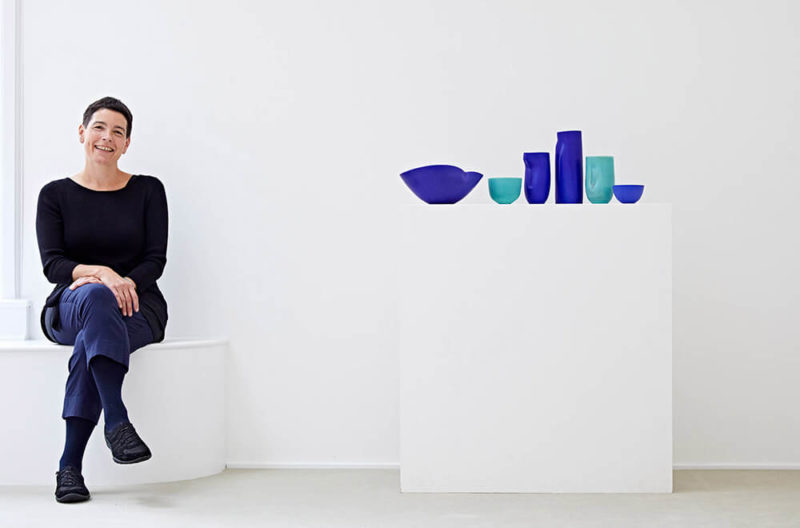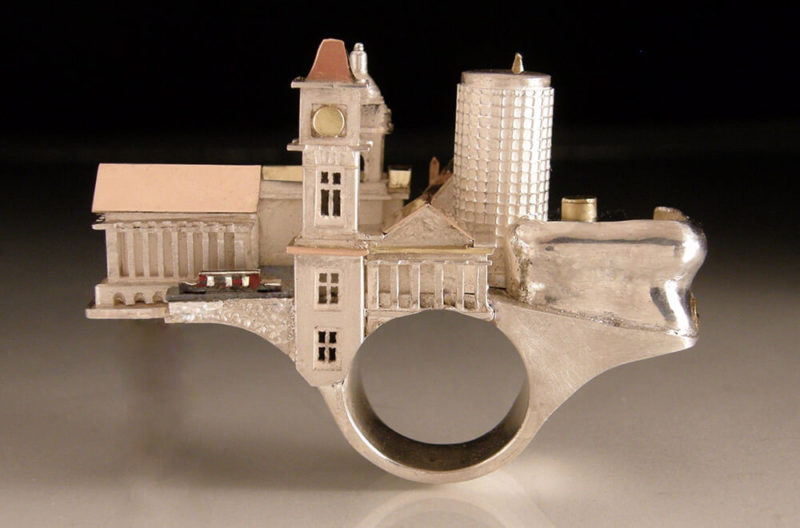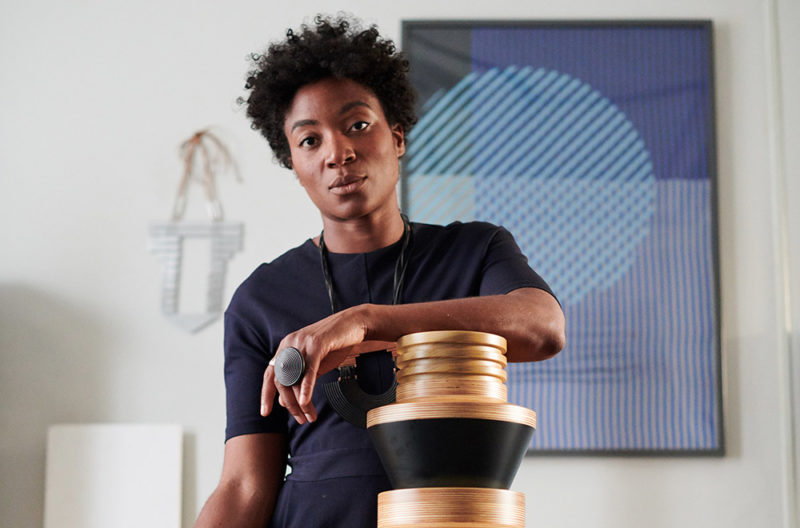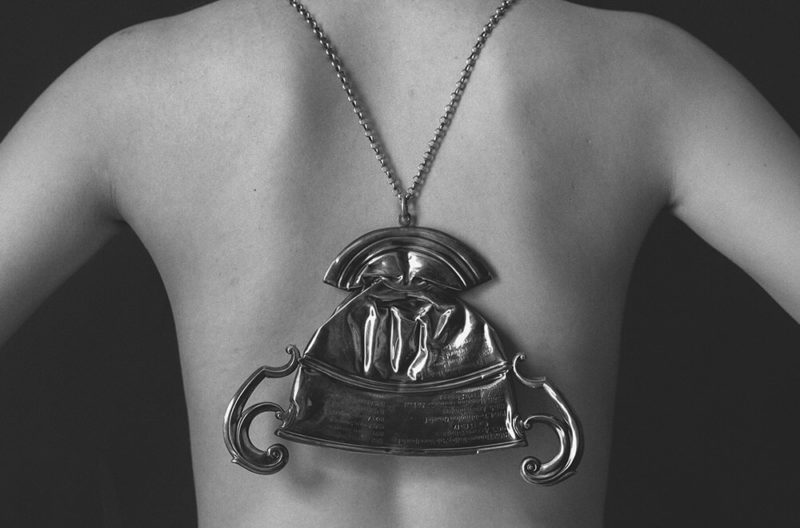Romilly Saumarez Smith: Gathering
A collection of rescued treasures – reimagined and transformed.
Make Hauser & Wirth Somerset
21st November 2020 – 13th February 2021
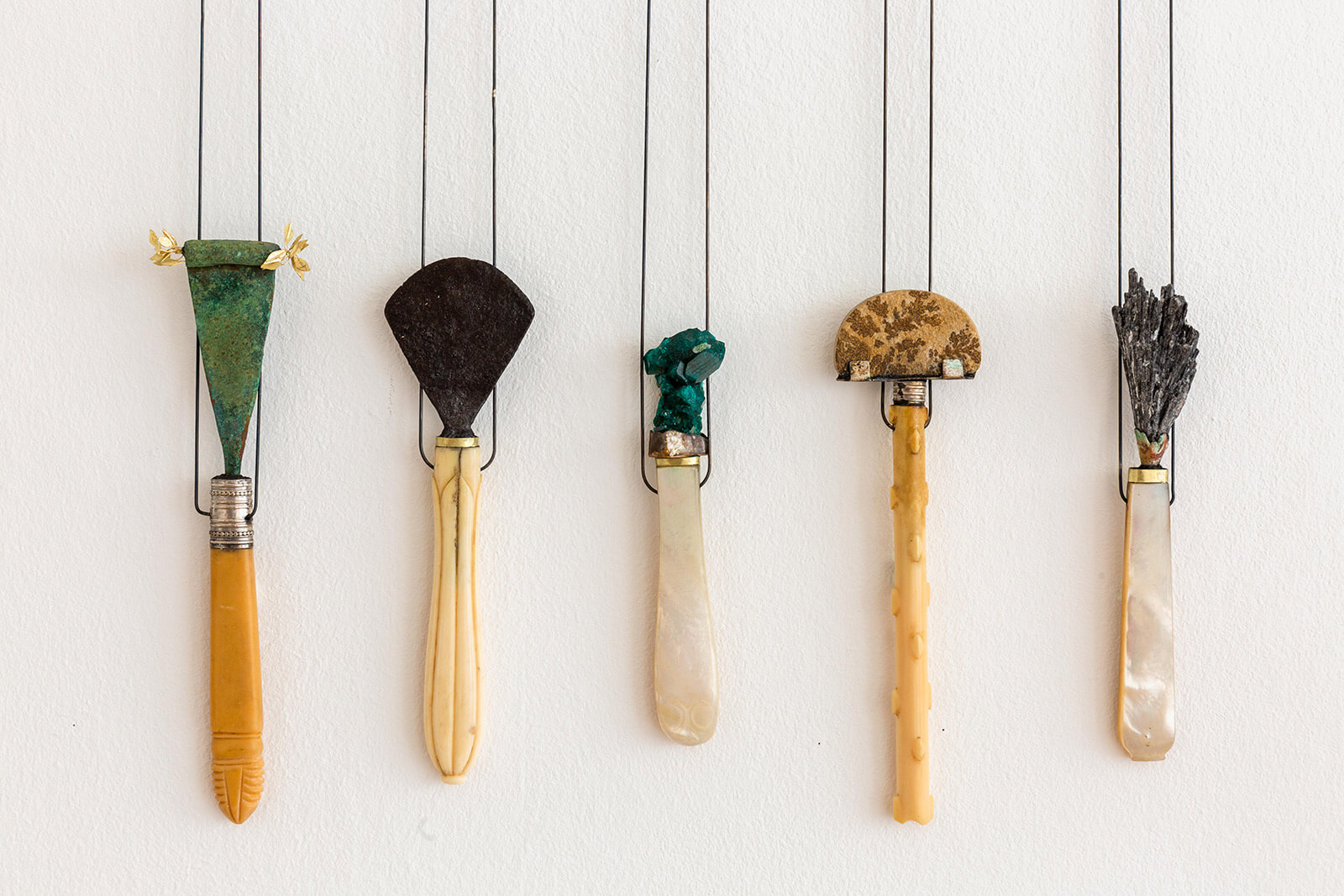
Romilly Saumarez Smith, ‘Five Hanging Tree Handles’, 2018. (Left to right) ‘Valedictory Tree’, ‘Shovel Tree’, ‘Emerald Tree’, ‘Semi-circular Specimen Tree’, ‘Exploding Tree’, 2018
COURTESY: Hauser & Wirth
JEWELLER ROMILLY SAUMAREZ Smith sits in sunlight, in the front parlour of her early eighteenth-century London town house. In front of her, on a table, are displayed an array of objects, which will go on display at Make Hauser & Wirth in Bruton, from 2nd December, and online, from 21st November, in a group exhibition entitled, Gathering. These objects, themselves gatherings, constructed from salvaged Victorian cutlery handles, married with finely made silver or jewelled tops – or intriguing found objects – have the technical intricacy and talismanic power of jewellery, but they cannot be worn. They mark a new departure for the artist.
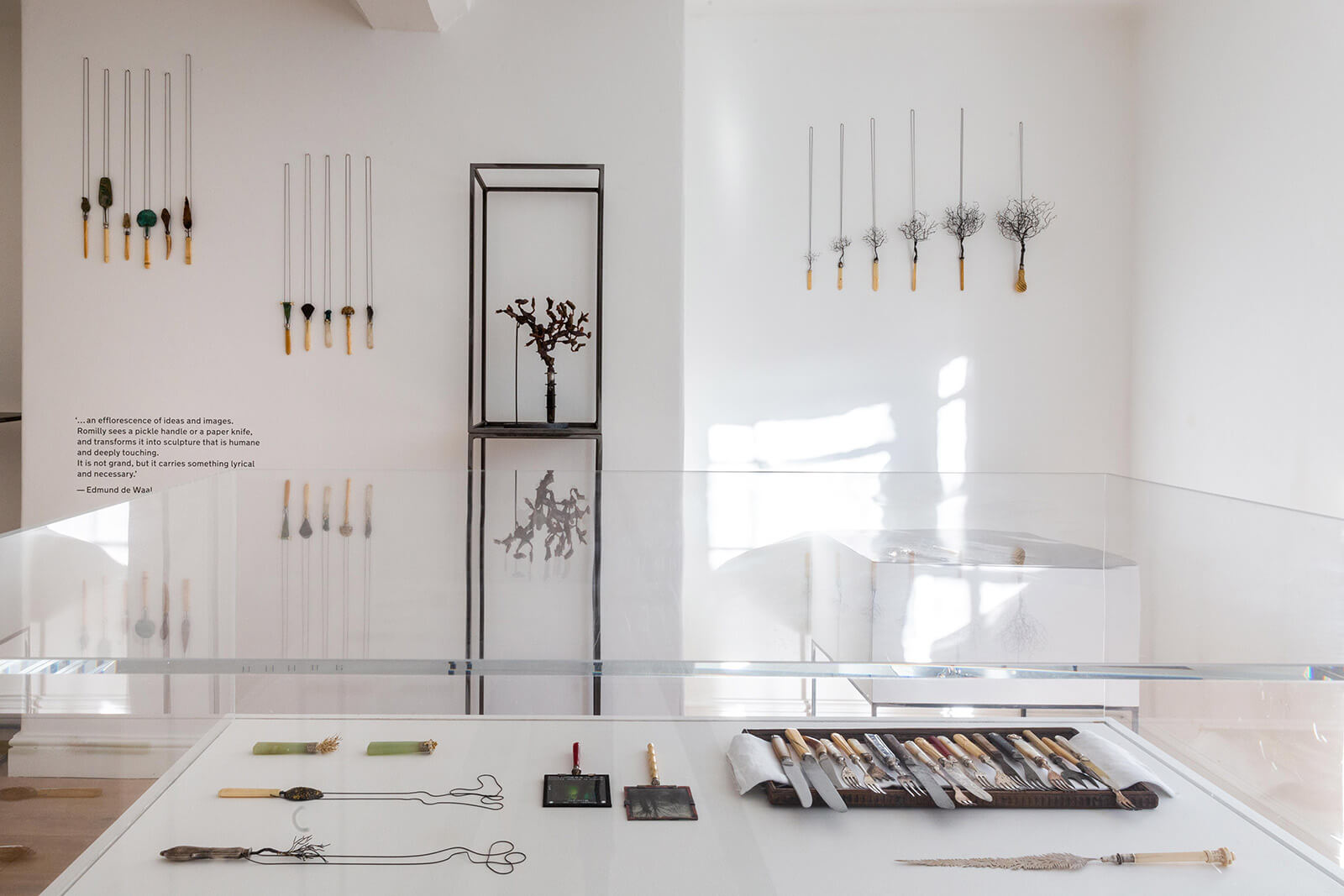
Installation view, ‘Gathering’, 2020
COURTESY: Hauser & Wirth
For twenty-five years, Saumarez Smith, who is married to the British art historian, Charles Saumarez Smith, was a bookbinder. In the 1990s, she began to experiment with metal, both in her bindings, and by creating poetic, one-off pieces of jewellery, using processes and techniques drawn as much from bookbinding as silversmithing. For a while, these disciplines developed in parallel – indeed, in 2010 the Yale Center for British Art in Connecticut hosted a solo exhibition of both bookbindings and jewellery. In the 2000s, though, Saumarez Smith was struck with an illness which has left her mostly paralysed and unable to use her hands. For some years she stopped working altogether.
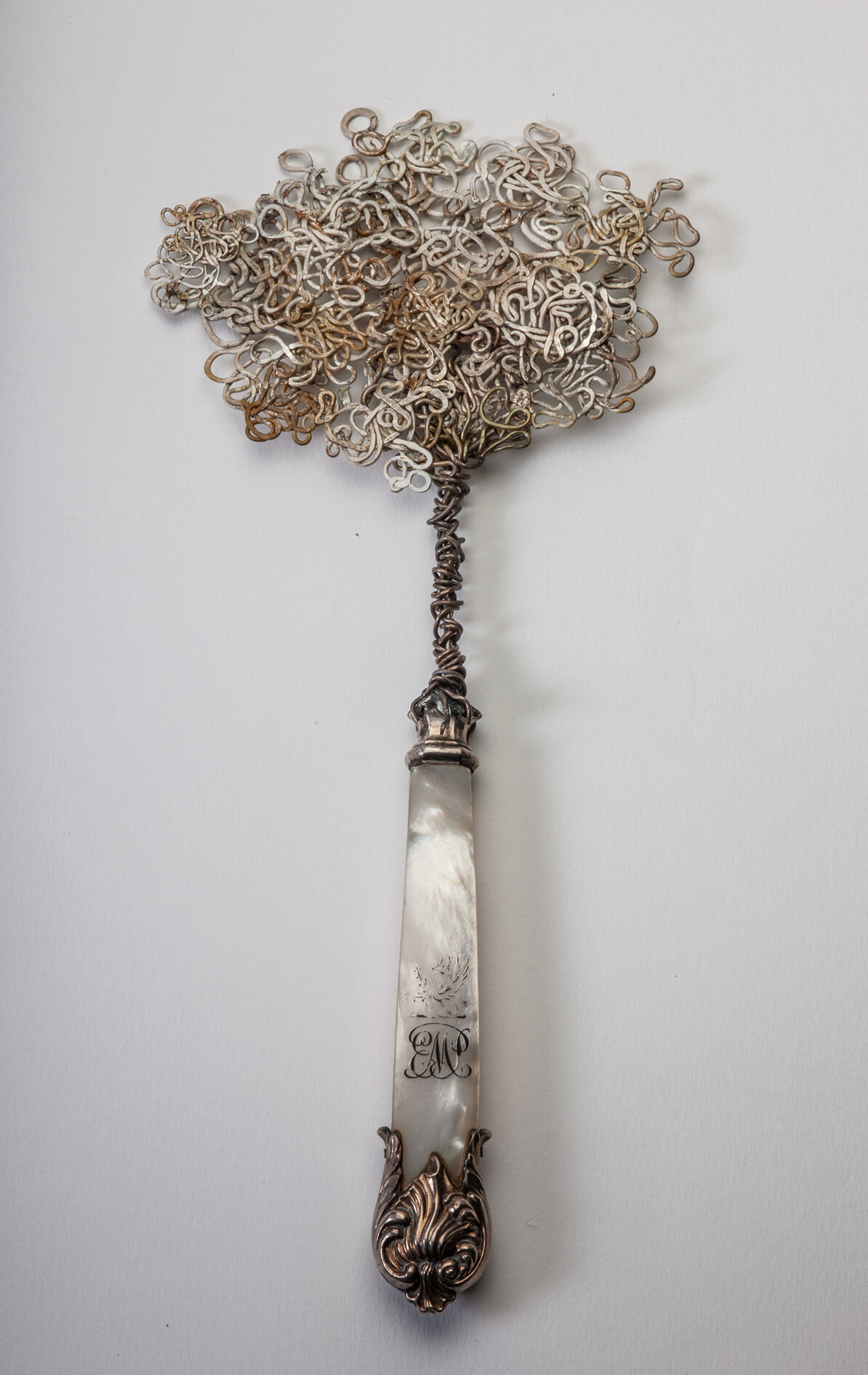
Romilly Saumarez Smith, ‘Nouveau Tree’, 2018
COURTESY: Hauser & Wirth / PHOTOGRAPH: © Romilly Saumarez Smith
An encounter with the jeweller Lucie Gledhill, however, opened a new chapter. Saumarez Smith and Gledhill evolved a way of working whereby Saumarez Smith’s ideas, communicated through language, and based on a shared knowledge of materials and techniques, are realised by Gledhill in a remarkable double act of imagination and generosity. As the years have gone by, Saumarez Smith has found other collaborators – Anna Wales, Rachel Jones, Laura Ngyou – enabling her to develop different strands of making. The beautiful ‘Us At Work’ pieces, “pay the bills”, she tells me; while her Newfoundland strand expresses her remarkable sensibility for the ancient, the curious, the abandoned and forgotten.
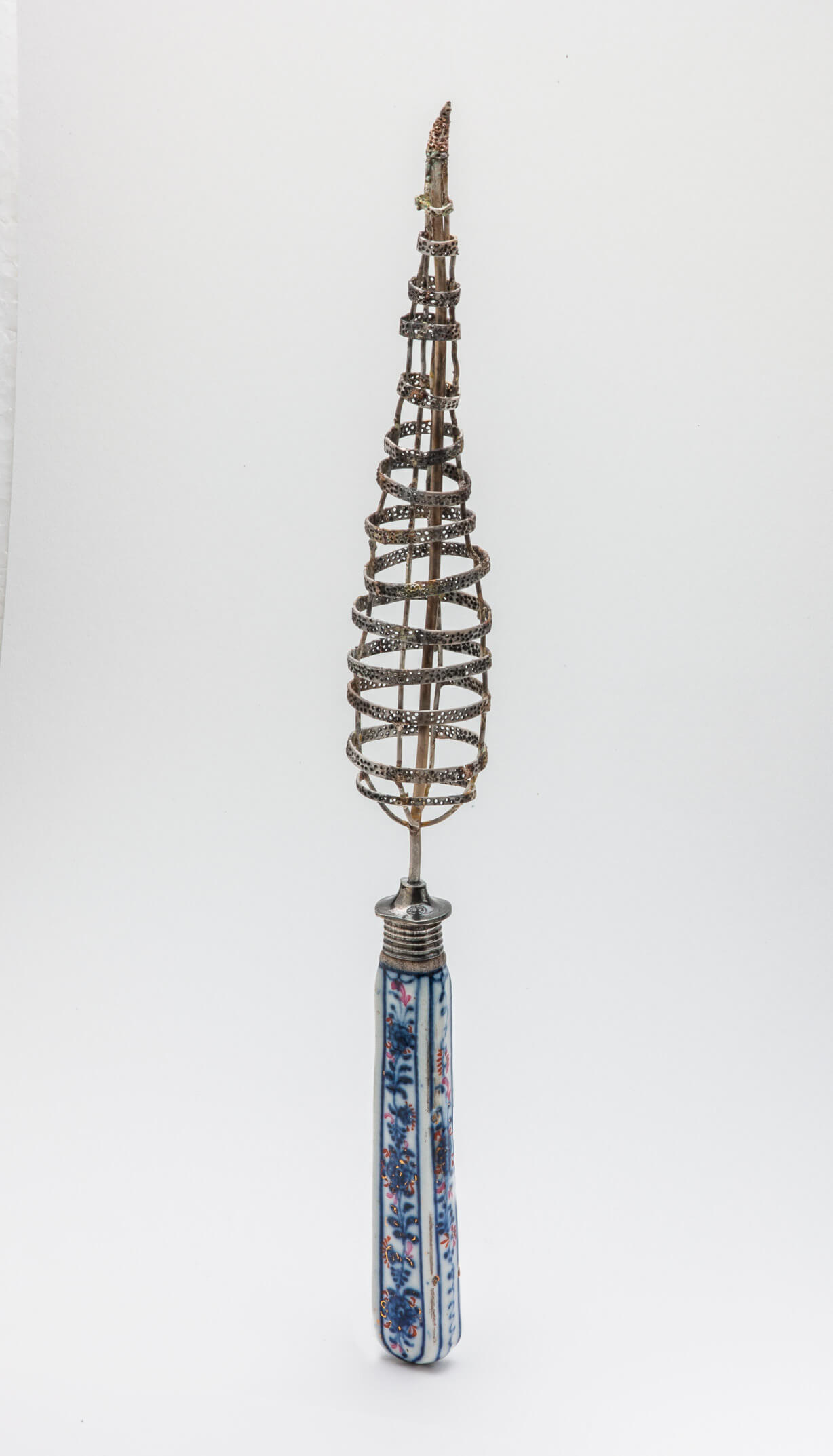
Romilly Saumarez Smith, ‘Crinolined Tree’, 2020
COURTESY: Hauser & Wirth / PHOTOGRAPH: © Romilly Saumarez Smith
The system works because of the vividness of her imagination, “I think I have probably always been able to play with these ideas in my head, but it has got more interesting. It is probably like someone who goes blind and their hearing gets better. Because I can’t move, what goes on in my head is incredibly intense.” But she also acknowledges the difficulty: “The more my assistants work with me, the better it is, but I am asking a lot of them, because jewellery often is about perfection and that is actually not what I want, I want to see a hand behind it. And, in addition, I want to see my hand behind it.”
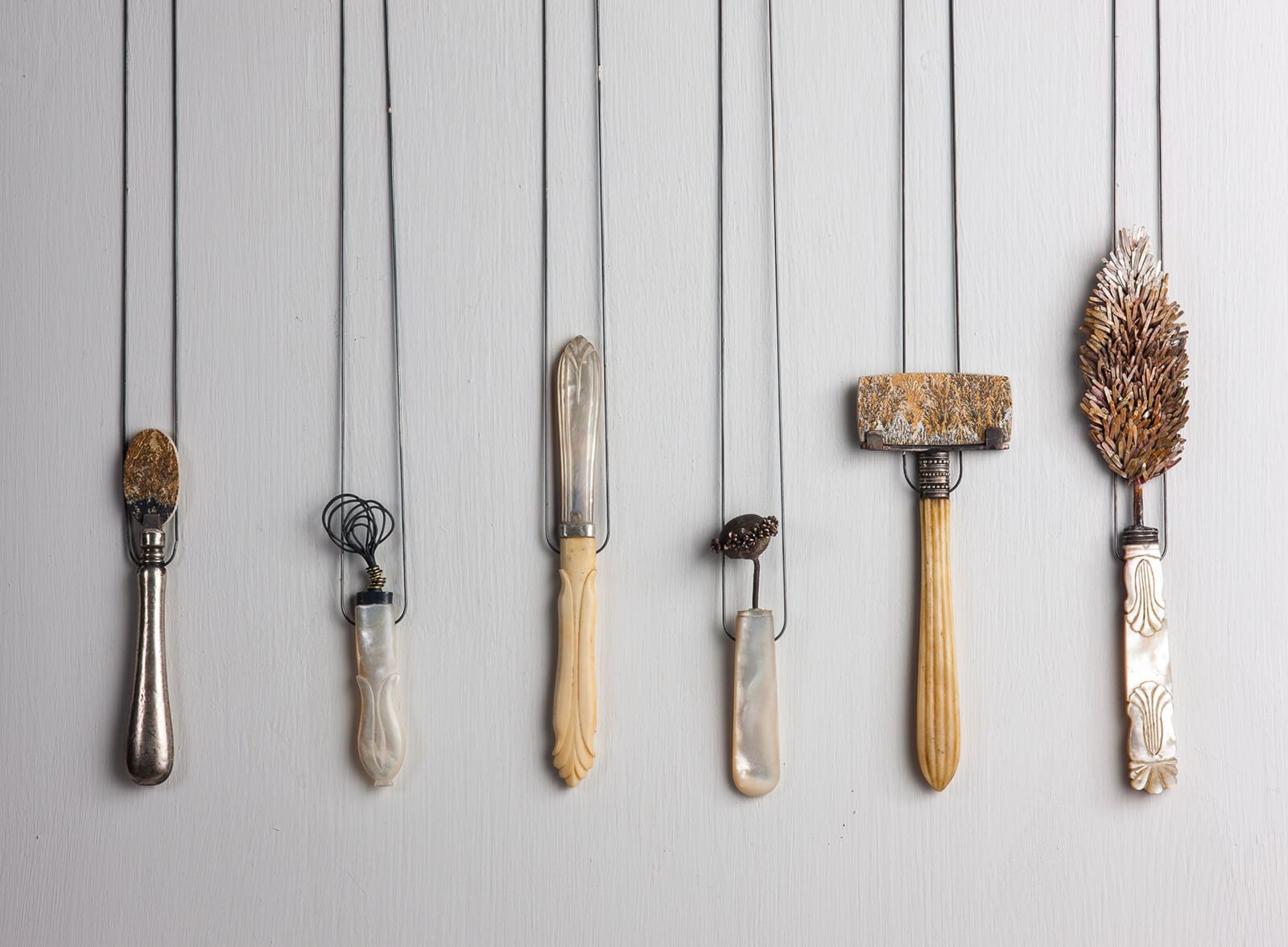
Romilly Saumarez Smith, Six Hanging Treehandles. (Left to right) ‘Silver Spoon Tree’, ‘Whisk Tree’, ‘Tree Trunk Tree’, ‘Philosopher Tree’, ‘Specimen Tree’, ‘Variegated Cypress Tree’, 2018
COURTESY: Hauser & Wirth / PHOTOGRAPH: © Romilly Saumarez Smith
The latest pieces, called ‘Treehandles’, have been made with Laura Ngyou. They relate, both in mood and process, to the beautiful ‘Newfoundland’ works Saumarez Smith has been making since she first discovered eBay, in 2010, to be a bottomless source of fragments of the past dug up by amateur archaeologists and metal detectorists. Saumarez Smith says, “In 2017, my friend and neighbour Alison Wilding, the sculptor, gave me seven or eight broken agate knife handles, which she found in Bermondsey market. She said, ‘Oh, you might be able to do something with these’. I thought they might be necklaces, but they have become more like slightly abstract trees – and they have long snake chains.” She adds, “By the time I made them I realised they weren’t for wearing, they would be ridiculous, spiky and uncomfortable. But the chains offered a way of hanging them, and also made reference back to jewellery. I think these new pieces fit into something like a cabinet of curiosities. Jewellers have always embellished things like shells. I am not sure it is quite sculpture.”
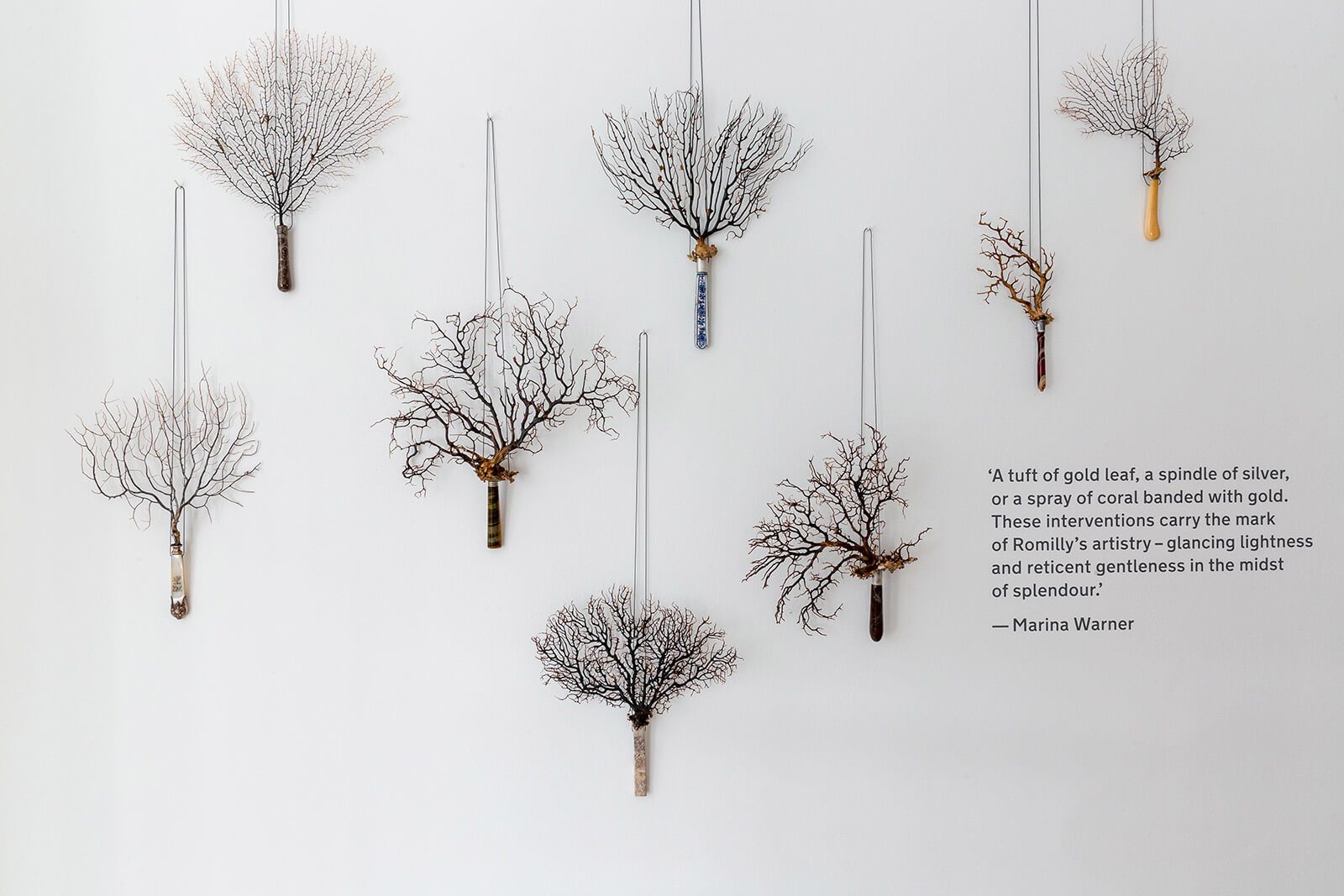
Installation view, ‘Gathering’, 2020
COURTESY: Hauser & Wirth
They are, however, like small poems, juxtaposing one mute fragment with another to create new meaning, or, as Saumarez Smith says of the spectacular ‘Sea Fan’ pieces, “joining two bits together as Duchamp would have done.” The placement of one salvaged piece with another rescues each from silence into a new conversation: a beautifully made pickle handle matched with a Roman medical instrument; a small ammonite given new status by the decorous carved handle that now holds it; a rough emerald offset by mother of pearl.
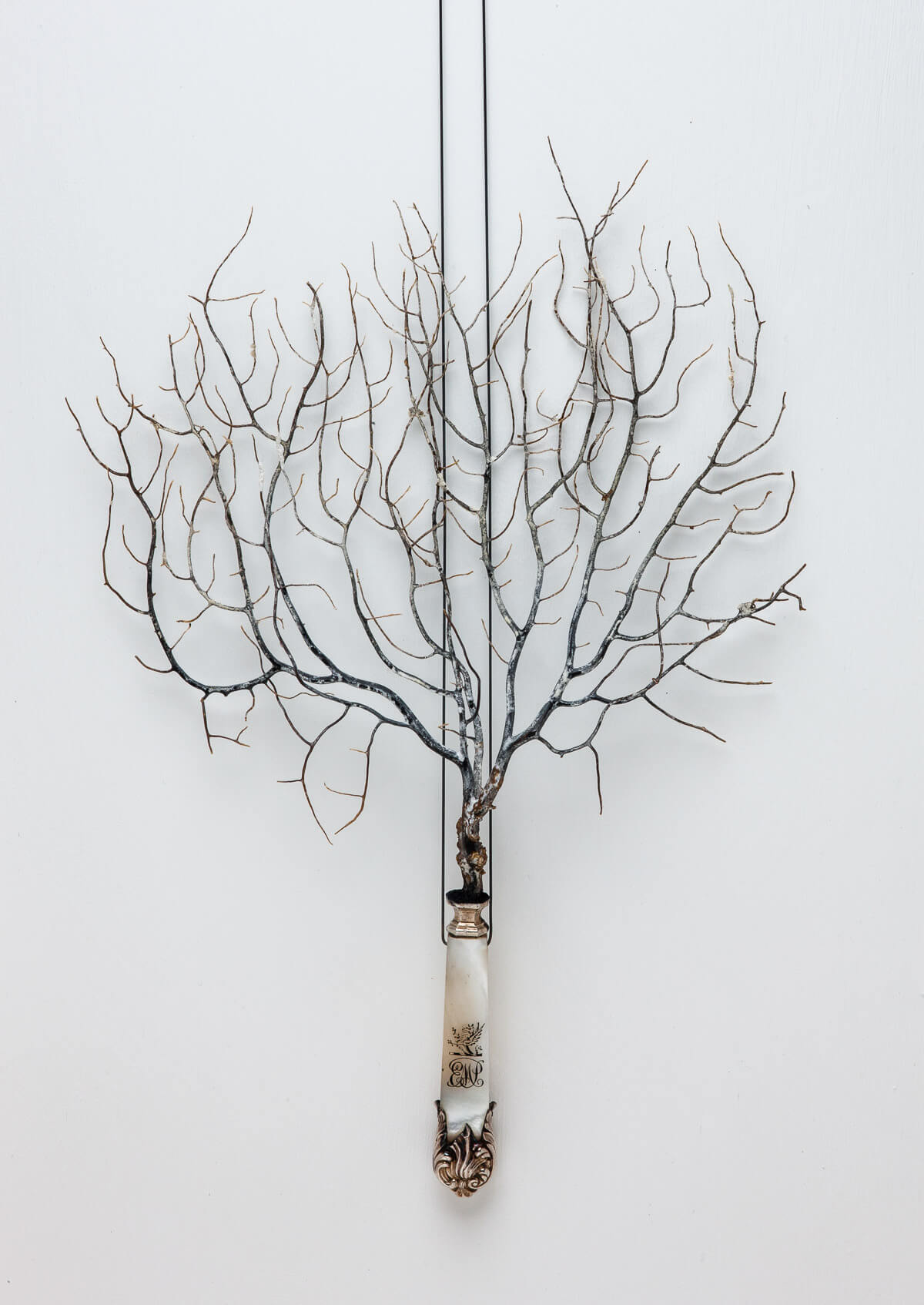
Romilly Saumarez Smith, ‘Sea Fan Tree II’, 2020
COURTESY: Hauser & Wirth / PHOTOGRAPH: © Romilly Saumarez Smith
For some pieces, Saumarez-Smith has been inspired to create her own homage, transforming one handle with a Christmas tree-shaped metal crinolined structure, building a tree-like mass of tiny silver filings for another, or by adding golden laurel leaves to the ‘Valedictory Tree’. Another pair, placed together, ‘Procumbent and Thicket’, are inspired by stumpy plants which can survive in the Arctic: “the Agate handles looked very icy,” Saumarez Smith explains.
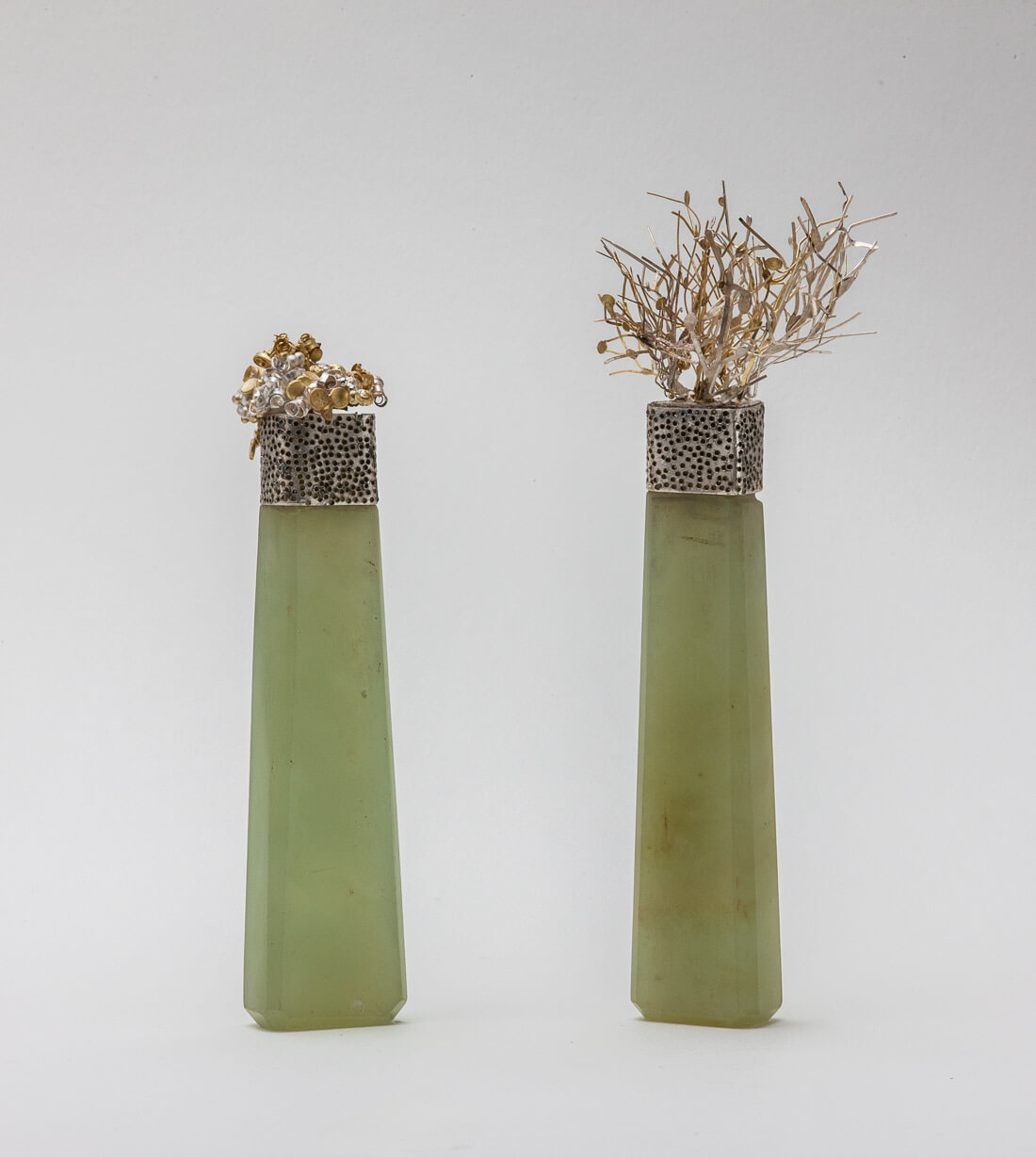
Romilly Saumarez Smith, ‘Procumbent and Thicket’, 2019
COURTESY: Hauser & Wirth / PHOTOGRAPH: © Romilly Saumarez Smith
What gives these works their poignancy is Saumarez Smith’s care, through her own thoughtfulness, for the work of the original makers – but there is no nostalgia in her work. The new pieces offer a place to the past in our contemporary world, but on our own terms. As Saumarez Smith says, “How stymying of life, all that decorum.” Through her compelling reimagining of their purpose, she has set those handles free.
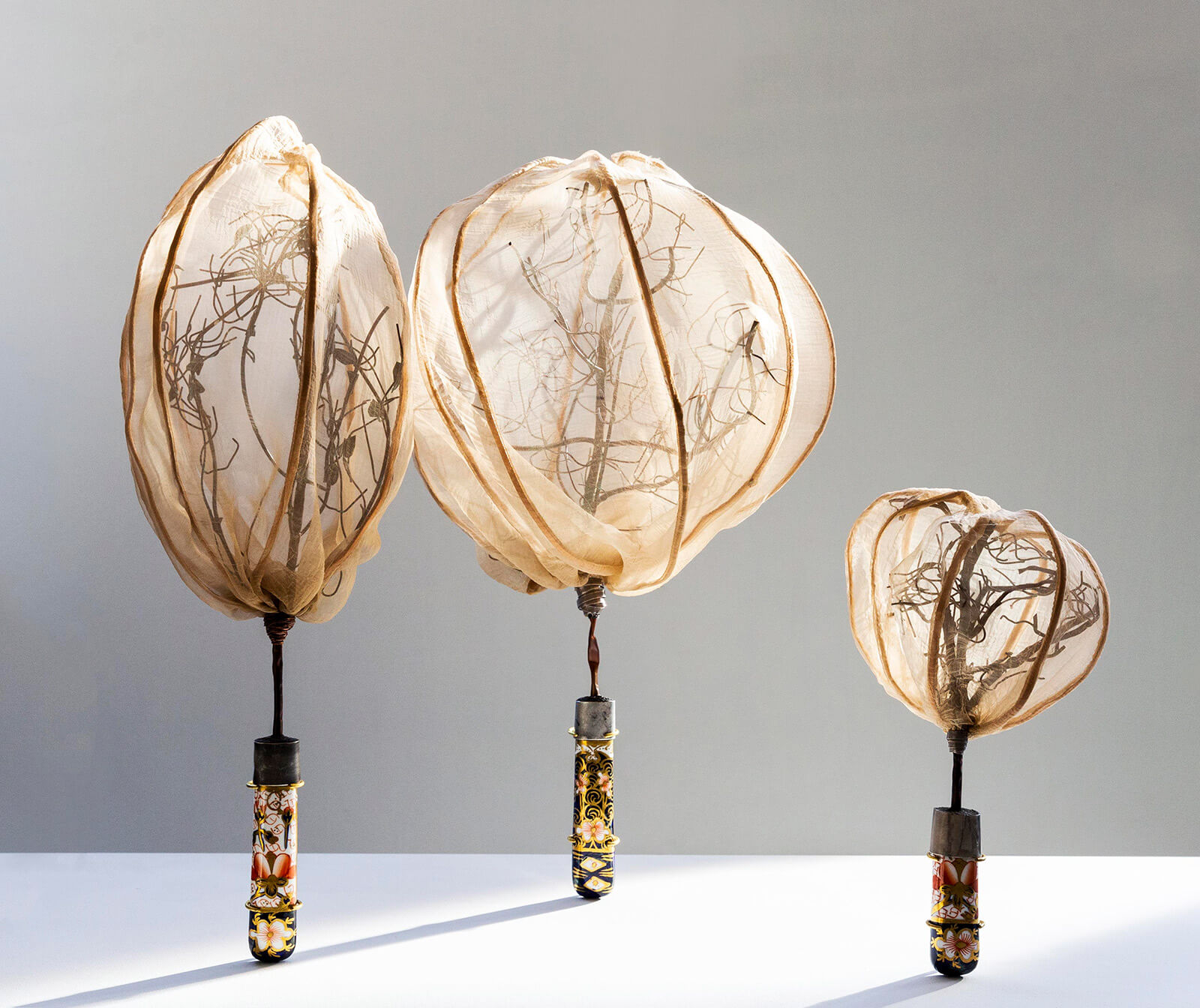
Romilly Saumarez Smith, ‘Christo Mimesis’, 2019
‘Gathering’ at Make Hauser and Wirth.
Romilly Saumarez Smith – a jewellery designer based in London.




